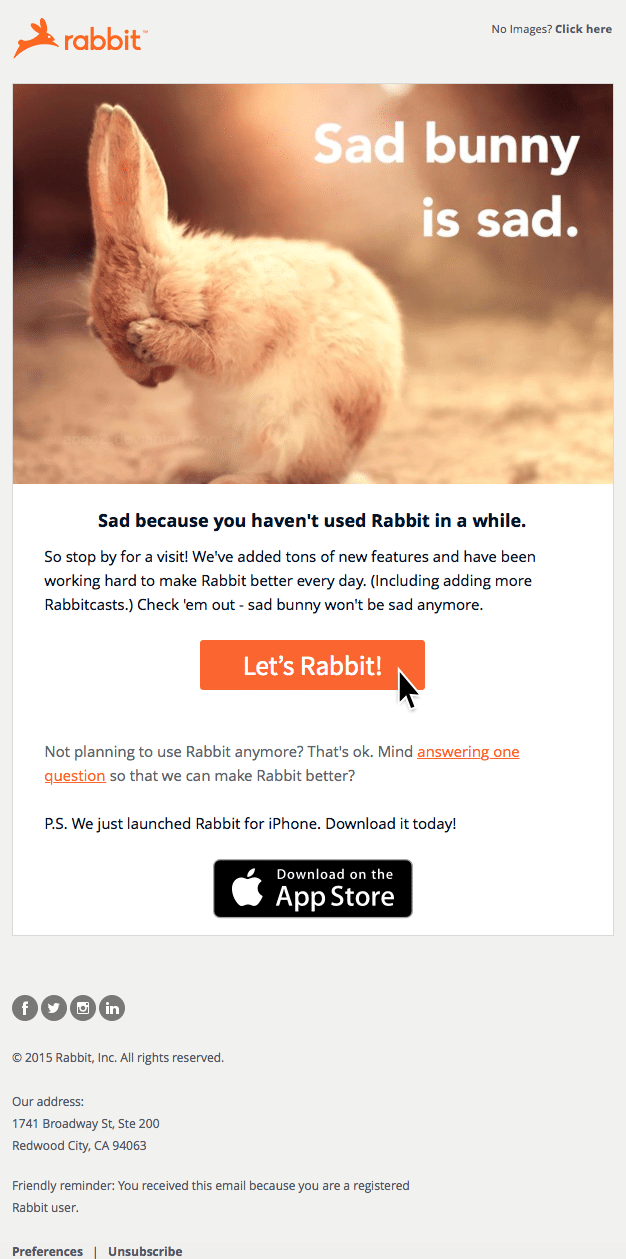Email marketing, the digital marketing strategy with the highest ROI, is a great fit for most companies who do business online.
But a good email marketing strategy depends on having a strong, loyal list. And, in order to get the kind of healthy, evergreen list you need for top results, you need to focus on email list management best practices.
What is email list management?
Email list management encompasses numerous action items you want to master if you’re going to grow a loyal list of subscribers. Think of list management as a means to grow, segment, and maintain your email list and its health. (More on that later.)
Email list management includes everything from managing bounced emails to importing an email database from Excel. Adding double opt-in signup forms to your website and creating a re-engagement campaign are all part of email list management. Your goal is to slowly grow your subscriber base so you can turn browsers into shoppers and prospects into customers. And that takes time.
But, there are things you can do to keep your list growing and growing in a healthy way. Before we dive in to how to make a healthy list, let’s determine what it means for a list to be healthy.
What makes a healthy list?
There are a lot of elements that go into developing a healthy email list but the two most important are engagement and churn.
An engaged list is a good list
Engagement is critical for ensuring your email campaign earns the kind of results you’re looking for. If no one opens your email, then certainly no one’s reading it either, which means your opportunity could be wasted.
Plus, sending emails only to have them end up in spam folders or go to nonexistent addresses can negatively impact your sender reputation. This hurts the reputation of your IP, which, in turn, lowers your deliverability even further.
Learn from the churn
Email churn refers to the number of people leaving your list through unsubscribing, who report you as spam, whose addresses results in a hard bounce, or who just don’t open your emails.
They’re either not engaging or they’ve actively disengaged with your emails.
The average churn rate is 83%, which really means that 17% of your emails are not making it into your target audience’s inboxes.
While some churn is inevitable, using email list best practices will help rejuvenate your list and slow the churn to a manageable rate.
Now that you understand what makes a nice, healthy list, you’ll need to keep it that way.
6 email list management best practices
Following these six best practices will keep you and your readers happy with the content you’re sending.
Once you’ve spent time—and money—growing an organic list that’s chock full of quality contacts, you’ll want to manage it correctly to keep it strong and healthy. And yet, list management is often overlooked as an effective email marketing practice.
As we discussed earlier, disengaged subscribers have a strong, negative impact on your list’s deliverability. Soft or hard bounces, negative spam reports, and lack of engagement all affect your key performance indicators (KPIs), so list management should be a non-negotiable part of your email marketing strategy.
Here are six management techniques that will help you monitor—and protect—your valuable email contacts.
1. Make new subscribers feel welcome
Maintaining your list begins at your first contact with a subscriber, when their experience with your brand is fresh in their mind and their excitement about your company is at an all-time high. This is best accomplished by sending an automated welcome email or series of emails triggered by their opt-in.
Here’s how Ringly says hello:
The first welcome email should thank them for joining your list and ask them to “whitelist” your email in their address book to keep you out of the spam folder. Personalize the welcome series as much as possible and don’t forget to direct your newest fans toward your best content to make them feel welcome and invested in your brand.
The other thing the initial email needs to do is let your subscriber know how you’re going to contact them in the future: How many emails they’ll receive, what kind of content to expect, and anything else that could be important.
Similarly, make it clear how your subscribers can contact you, adjust their preferences, or unsubscribe.
2. Let subscribers choose the frequency
MarketingSherpa did some research and discovered that the top reason people unsubscribe from email lists is due to receiving a surplus of emails.
When you make it easy for your subscribers to choose their own frequency, you’ll take the guesswork out of your segmenting and you can feel good about your marketing strategy.
Here’s a good example from AllRecipes that shows how simple it is to allow your subscribers to set their own preferences:
Allowing subscribers to fine-tune the frequency of emails and customize the type of content you send them will help keep them engaged and subscribed.
Giving them the option to unsubscribe from emails they don’t want while staying connected to the content they do value is a great way to show your contacts how much you value your relationship with them. Remember, your subscribers invite you into their inboxes because they believe doing so will add value to their lives.
3. Keep your list clean
List hygiene is a buzzword in email marketing circles—and with good reason. Keeping your list clean is important to the success of your marketing efforts, and yet most businesses struggle with this aspect of list management.
For best results, you should consider doing a list cleaning a few times per year or when you notice a spike in bounce rates, whichever comes first.
Here’s some of what you’ll do when you clean:
- Remove duplicate addresses.
- Remove addresses with typos.
- Fix addresses with typos.
- Update invalid addresses.
- Remove invalid addresses.
- Delete emails from hard or soft bounces.
Don’t worry if you have a lot of invalid email addresses—people move, change jobs, and get new addresses all the time, often forgetting to update their opt-ins.
Removing these addresses from your list is important, as the higher your bounce rate is, the more it hurts your sender reputation and the less likely your mail is to get delivered.
4. Re-engage or eliminate old contacts
After you’ve purged your list of all the incorrect, invalid emails, you should be left with a stronger list of contacts. You’ve still got some work to do, though, as some of those contacts are undoubtedly unengaged. An unengaged contact is one who has a valid email address and is still subscribed but doesn’t open or read your emails.
Even if they haven’t actually clicked that “Unsubscribe” button, they’re not connected to you and they’re probably deleting your emails anyway.
You have two options in dealing with your unengaged subscribers. You can purge their address since they’re not helping your sender reputation or your return-on-investment, or you can try to re-engage them.
Re-engagement campaigns are a fantastic way to re-ignite your lagging subscribers’ interest in your product or service, so they are worth a try before deleting a list member.
Here’s how Rabbit re-engages their customers using email:
Source: Really Good Emails
Only send re-engagement emails to those list members who haven’t opened or clicked during the prior 6 months to a year. Send them a targeted email, perhaps with updated benefits of subscribing or with a small freebie, and ask them to re-subscribe.
If they do, great! A subscriber saved is a subscriber earned. But if they don’t, you can feel good about removing them from your list, knowing you’ll ultimately see better results from a more engaged list, even when it hurts to say goodbye to those hard-earned subscribers.
5. Make unsubscribing easy
It seems wrong to make unsubscribing easy when the goal is to keep people on your list, but there’s no point in hiding it. If one of your contacts wants to unsubscribe, they’re going to—one way or another. If they can’t easily scan your email and see how they can unsubscribe, they’ll mark you as spam instead.
Having a prominent unsubscribe button keeps you on the right side of CANSPAM and keeps users happy, even if they aren’t a good fit for your message.
Don’t fret over using this technique. If users unsubscribe, they weren’t engaged, anyway.
With unengaged users off the list, you can concentrate on delivering targeted, relevant content to the people who are excited to hear from you—and that’s the stuff that email marketing’s high ROI is made of.
6. Never buy lists
This should go without saying by now, but it’s too important not to include. First of all, it’s illegal. You could face legal backlash from violating CAN-SPAM and end up paying $16,000 in fines for each email sent improperly.
Secondly, most purchased or rented email lists are poor quality. They aren’t targeted for your brand, niche, or industry, so you won’t get full value from interaction with them. They also consist of spam traps, once-valid email addresses that will automatically get your IP blacklisted for sending to them.
No matter how tempting it might be to quickly and easily bump your number of subscribers, remember how annoying you find it to receive unsolicited emails and remember the golden rule.
For the definitive content library on list management, check out our Knowledge Base but the above email list management best practices will get you started.
Wrap up
A strong email list can improve your deliverability, increase your email marketing ROI, and position your business for digital success. But, no matter how much you want to have a huge list, remember quality is determined by results—not quantity.
That means, never buy a list and keep yours clean, growing your list of subscribers organically with permission-based tactics, and managing it by conducting frequent, scheduled maintenance. Consider re-engagement campaigns when appropriate but remember to make it easy for contacts to leave your list when the relationship fades.
Keeping your list chock-full of loyal, engaged subscribers is the right tactic for email marketing success.


 Source: Really Good Emails
Source: Really Good Emails



